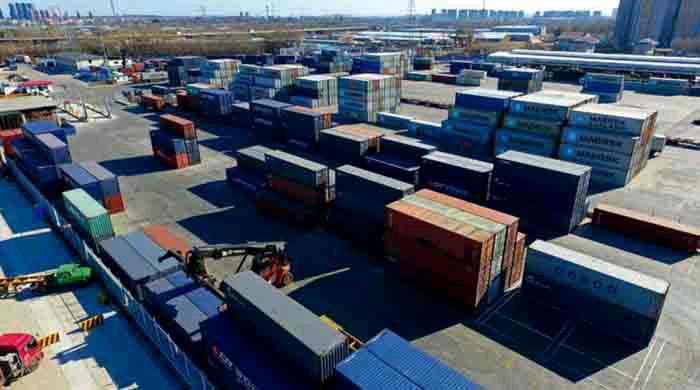Belt and Road Initiative and APEC: Hand-in-Hand
2017-12-26byXuXiujun
by+Xu+Xiujun
An important member of the Asia- Pacific Economic Cooperation(APEC), China is closely tied to other countries in the Asia-Pacific region and shares a common future with them.
Following the principle of achieving shared growth through discussion and collaboration, China has launched and actively promoted the Belt and Road Initiative, which has received a warm response and heavy support from nations in the Asia-Pacific region. In May 2017, the Belt and Road Forum for International Cooperation was held, heralding the initiatives entry into the phase of full implementation. Seizing the opportunity to build the Belt and Road, China and its Asia-Pacific partners are working more closely together in policy coordination, facility connectivity, unimpeded trade, financial integration and people-to-people bonds to realize coordinated and interactive development and create new driving forces for the regions development.
In November 2017 in Da Nang, Vietnam, the 25th APEC Economic LeadersMeeting witnessed the APEC leadersfirst gathering after the Belt and Road Forum for International Cooperation, which played an important role in complementing the Belt and Road Initiative and the APEC mechanism. The initiative provides new chances for cooperation in the Asia-Pacific region, while building on the fruits of past cooperation, that have laid a solid foundation for in-depth participation in the construction of the Belt and Road. Given the achievements of the latest APEC summit, the initiative clearly matches APECs goal and agenda, evidencing the great potential in the alignment of the initiative and the APEC mechanism.
China proposed the Belt and Road Initiative in hopes of promoting a community of shared future for mankind and building a peaceful, safe, prosperous, inclusive, open and clean world. China has always paid great attention to regional cooperation and the establishment of a community of shared future in the Asia-Pacific region. At the latest APEC summit, Chinese President Xi Jinping delivered a speech titled “Working Together for a New Chapter of Win-Win Cooperation in the Asia-Pacific,” which called for developing a stronger sense of community, harmonizing policies and creating synergy among APEC members. Furthermore, a declaration was issued following the conclusion of the Da Nang summit in which APEC leaders prom- ised to jointly build a peaceful, stable, energetic, linked and prosperous community of shared future in the Asia-Pacific region. This was the first time the APEC Economic Leaders Meeting explicitly cited an Asia-Pacific community of shared future, implying the convergence of the fundamental goal of APEC and the Belt and Road Initiative and a new chapter of building a community of shared future for mankind.endprint

Investment and trade cooperation are at the top of the agenda for the construction of the Belt and Road. The initiative advocates facilitating investment, eradicating trade barriers, creating good business climate, setting up free trade zones along the routes agreed upon by all stakeholders and tapping cooperative potential. These goals highly agree with APECs cooperative purpose. APEC leaders at the Da Nang summit endeavored to enhance unimpeded trade and investment cooperation by ratifying the APEC Roadmap on the Internet and Digital Economy and the APEC Cross-border E-commerce Facilitation Framework. Based on agreements reached at the Beijing summit, representatives called for taking determined steps toward a Free Trade Area of the Asia-Pacific, which will enhance cooperation on global value chains and sent a signal of support for multilateral trade mechanisms. Unimpeded trade under the framework of the Belt and Road Initiative and the freedom and facilitation of trade and investment under the framework of APEC can complement each other, constantly injecting new energy into regional economic integration.
The core goals of the Belt and Road Initiative are to promote infrastructure building and facility connectivity, strengthen economic policy co- ordination and strategic development cooperation, enhance coordinated and interconnected development and realize common prosperity. Connectivity of all levels and types across all fronts in the Asia-Pacific region represents an important piece of infrastructure connectivity linking Asia, Europe and Africa proposed by the initiative. APEC members are striving for connectivity and integration covering the AsiaPacific region across all fronts by 2025. The Da Nang summit encouraged connectivity and coordination among APEC members by constructing a safe, efficient, affordable and sustainable transportation system. So, with regards to infrastructure construction, the alignment of the initiative and APEC will embrace new opportunities.
Ultimately, the Belt and Road Initiative and the APEC mechanism share similar cooperative goals and agendas for involved nations. Inspired by the Da Nang summit, the initiative and APEC will find more space to complement each other. The Da Nang Declaration appeals for more joint efforts to promote policy coordination, unimpeded trade, facility connectivity, financial integration and people-to-people exchanges. The shared grounds lay a solid foundation for the alignment of the Belt and Road Initiative and the APEC mechanism.endprint
